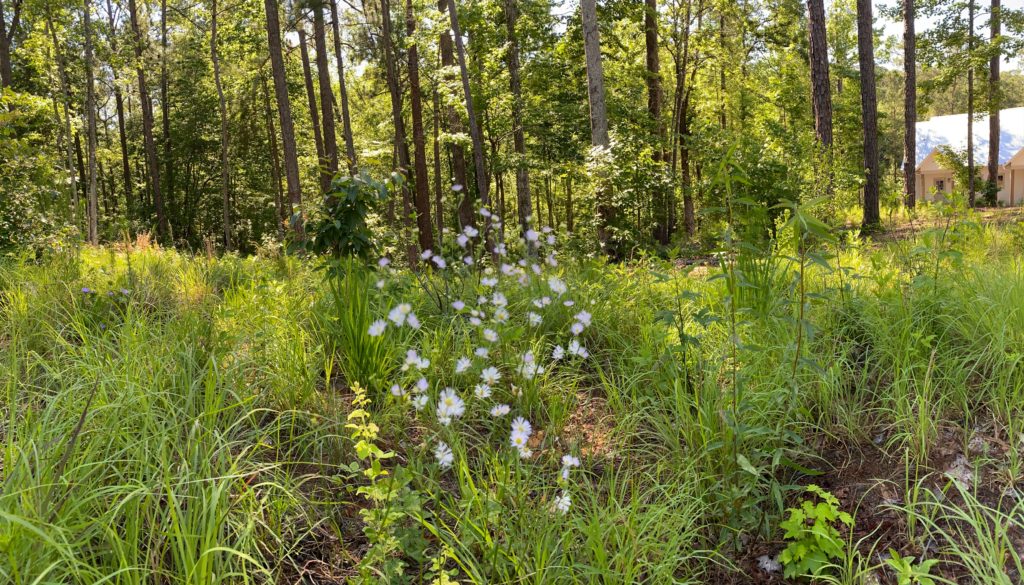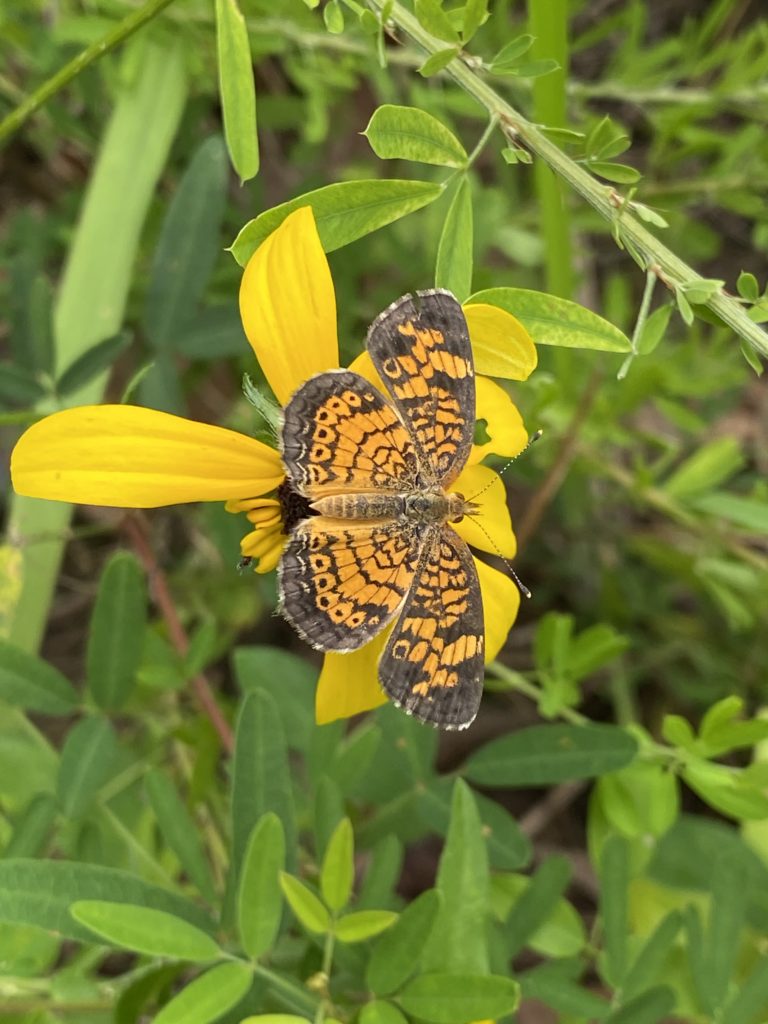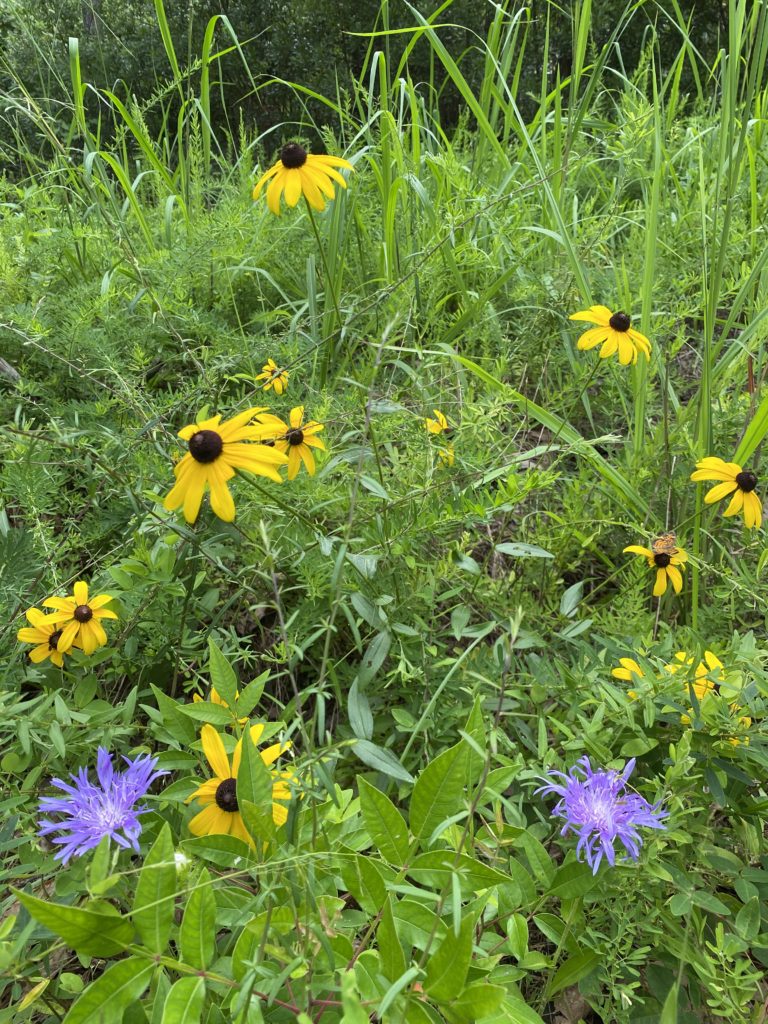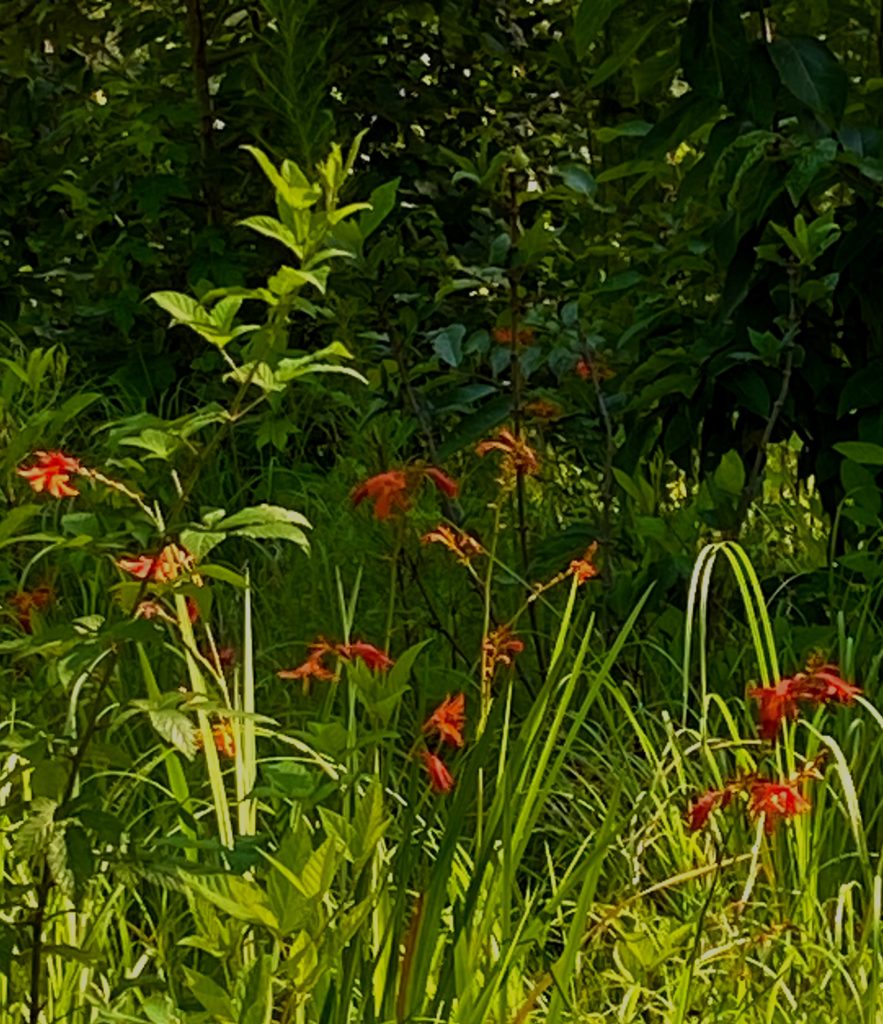
I’ve always liked the idea of a meadow filled with swaying grasses, sweetly-scented wildflowers, and humming insects. I’m drawn to the meadow-style plantings that remind me of the grasslands of the mid-west, where I once lived. I wonder if now that I live in the land of pine forests, I simply want what I can’t have.
Over the last few years, half-way across the country (in Alabama of all places), I have been experimenting with a meadow of sorts. We own a piece of land on a lake, and while most of it is wooded, there is a sunny clearing where I figured that I might be able to create what I now refer to as a “redneck meadow”. Every few months, I put on my rubber boots and wade through the grasses and brambles to look for anything blooming that might inform my plant choices for this “meadow”.
There is no supplemental watering for this meadow planting, except for what I can carry up the hill in a watering can, so what I grow must thrive in both drought and deluge, and oh did I mention the deer? With these obstacles, most of my neighbors would probably ask me why I bother. I guess I like a good challenge, and after all, gardening is just a very long experiment with pretty plants.
The Beginning of the Meadow
During house construction, trees were taken down so that we could have a gravel driveway, which left a sunny opening surrounded by mature hardwoods and pines. The next spring, hundreds of pine seedlings sprouted, which is how bare clay soil mends itself in the South. The following year, broom sedge and a few types of native flowers began to appear, including fleabane, black-eyed Susans, asters, and goldenrods. My first job was to pull the dozens of baby pine seedlings in my “meadow” to allow native grasses to dominate the area. (And dominate they did. I now walk through buff-colored broom sedge up to my waist, which has become a winter feeding ground for the birds.)
Last spring, I transplanted a few types of perennials from my Georgia garden, including stokes asters and black-eyed Susans. I also planted crocosmias, which might seem an odd choice (they are native to Africa, not America), but they spread in my Georgia garden with an alarming speed, so several clumps were added to the meadow, where the bright orange flowers now float over the grasses in early summer.
Over the last few years, I’ve seen blazing stars, wild ageratums, blue pea vines, annual lobellias, bird foot violets, and a number of different asters blooming on this piece of land. Closer to the water, there is a wonderful assortment of native trees and shrubs, including witch hazels, fothergillas, swamp azaleas, oakleaf hydrangeas, sassafras, button bushes, beeches, wax myrtles, and dogwoods.
Going forward, I’ll add to the meadow, repeating the plants already growing there, some grown from seeds or cuttings, some purchased in pots when I find a good plant sale. It’s hard to say whether I’ll have ever have a meadow pretty enough to wow visitors, but every year I look forward to whatever nature has to teach me about this small patch of land.


